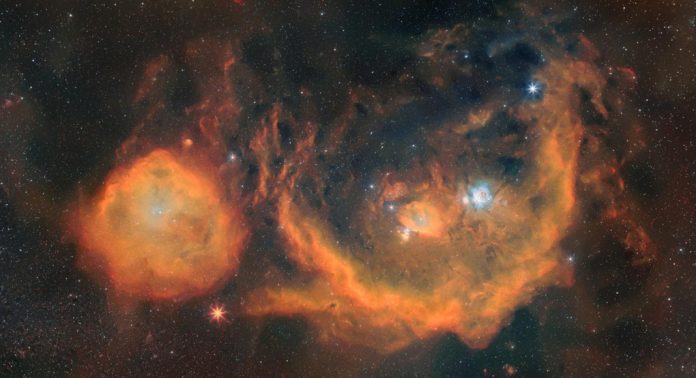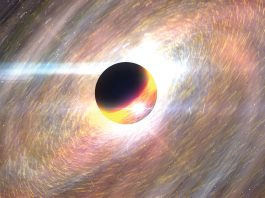Scientists have developed an accurate method to determine the surface temperatures of red supergiants to help astrophysicists study their lifecycle.
Stars come in a wide range of sizes, masses, and compositions. Our Sun is considered a relatively small star, especially when compared to the red supergiant Betelgeuse, which is 950 times larger. Red supergiants are over nine times the mass of our Sun. Due to their size, their lifecycle ends with extreme ferocity in an enormous explosion known as a Type-II supernova.
Type II supernovae seed the cosmos with elements essential for life; therefore, researchers are keen to know more about them. At present there is no way to accurately predict supernova explosions. One piece of this puzzle lies in understanding the nature of the red supergiants that precede supernovae.
These stars are extremely bright and visible at great distances and are difficult to study. This is due to the complicated structures of their upper atmospheres which leads to inconsistencies of temperature measurements.
Graduate student Daisuke Taniguchi from the Department of Astronomy at the University of Tokyo said: “In order to measure the temperature of red supergiants, we needed to find a visible, or spectral, property that was not affected by their complex upper atmospheres. Chemical signatures known as absorption lines were the ideal candidates, but there was no single line that revealed the temperature alone. However, by looking at the ratio of two different but related lines – those of iron – we found the ratio itself related to temperature. And it did so in a consistent and predictable way.”
Taniguchi and his team observed candidate stars with an instrument called WINERED which attaches to telescopes in order to measure spectral properties of distant objects. They measured the iron absorption lines and calculated the ratios to estimate the stars’ respective temperatures. By combining these temperatures with accurate distance measurements obtained by the European Space Agency’s Gaia space observatory, the researchers calculated the stars luminosity, or power, and found their results consistent with theory.
Taniguchi explained: “We still have much to learn about supernovae and related objects and phenomena, but I think this research will help astronomers fill in some of the blanks. The giant star Betelgeuse (on Orion’s shoulder) could go supernova in our lifetimes; in 2019 and 2020 it dimmed unexpectedly. It would be fascinating if we were able to predict if and when it might go supernova. I hope our new technique contributes to this endeavour and more.”









